Dinosaur Jr's J Mascis: “Coming from drumming, the guitar was so one-dimensional. I had to find all these things to make it more dynamic and expressive“
The alt-rock icon discusses the perils of option paralysis, pedal curation, and his very cool new signature Fender Telecaster
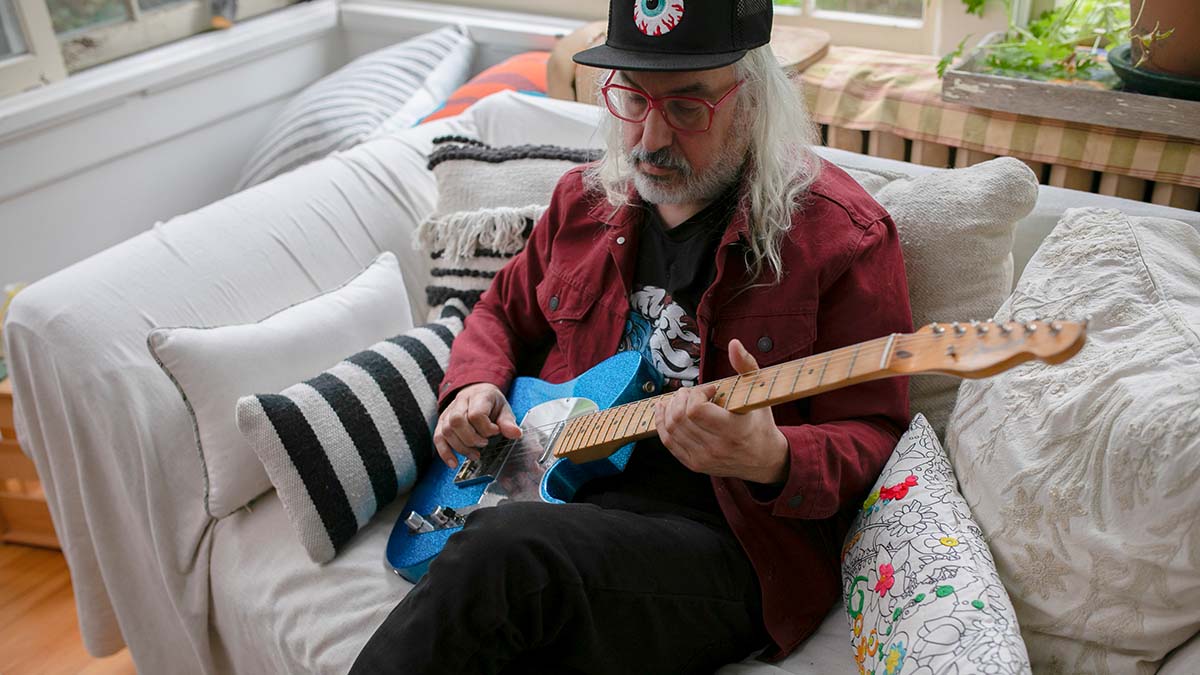
J Mascis is one of those players whose electric guitar tone sounds so real and textured and organic that you could reach out and touch it. There's a strange magic that happens when the Dinosaur Jr frontman puts his guitars through a signal chain heavily populated by fuzz and overdrive pedals and out through a vintage guitar amplifier.
It's a magic that even he is unsure of. Joining us over a Zoom video call, the conversation turns to effects, and if any turned up on the new Dinosaur Jr album, Sweep It Into Space. Mascis points to an array of different coloured stompboxes piled behind him. He takes a moment and prepares to talk through them before chuckling and thinking better of it. How can you audit all that gear? Where would you start?
Maybe when talking about Mascis' tone it's better to start with his new signature guitar. Based on his 1958 model, the Fender J Mascis Signature Telecaster has a Bottle Rocket Blue Flake finish and a chrome pickguard, a top-loader bridge and custom-wound pickups. Sure, sometimes we tend to think of Mascis as one of the early standard bearers for the Jazzmaster – he and the likes of Sonic Youth resurrected the fortunes of Fender's classic offset in the 80s and 90s – but the Telecaster as one of the most treasured in his collection. That is the guitar he keeps coming back to.
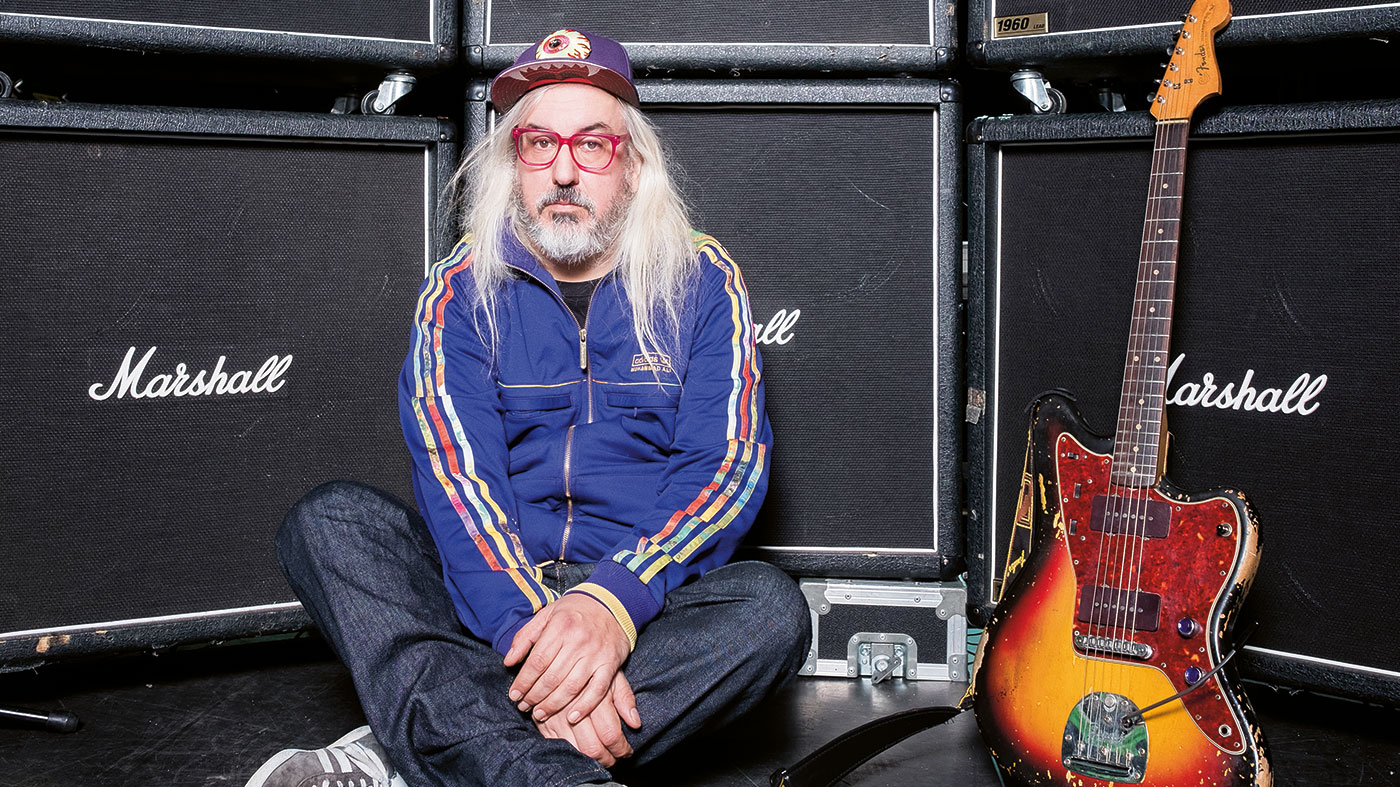
Take a VIP tour of of the Jazzmaster-toting fuzz legend's 2017 live rig.
Maybe it's because the top-loading bridge makes bending the strings that bit easier. That was certainly part of the design's appeal for Led Zeppelin's Jimmy Page. Or maybe it had something to do with the pickups. Where Tele pickups have a chastening bite and twang, there's a little more width to Mascis' Telecaster voicing that, again, seems like it is under some kind of spell. Or maybe it's simply the colour.
Mascis isn't so sure. As he explains, he just picks them up in the hope that a song will come out, or at least a riff idea that could be worked out later. His approach to pedalboard curation, finding a fuzz pedal that works for his sound, is similarly beholden to happenstance. We're living in a glut of pedals, many with dual modes, easter eggs, internal dip switches and presets. This stuff can get in the way, he warns. As he advises us here, at some point you have just got to start playing the guitar. You can work out the rest afterwards.
This model is based off your 1958 Telecaster. How did that guitar come into your possession?
“I got it from this guy who owned this studio in Boston, Fort Apache, and I think I was producing Buffalo Tom. He had a lot of guitars. He had that guitar out and I was playing it a little bit, I got into it and asked him if he wanted to sell it. He said he would never sell that guitar but two months later he called me. And that was in, like, 1990 or something.”
Want all the hottest music and gear news, reviews, deals, features and more, direct to your inbox? Sign up here.
If I play two solos on two different guitars, I usually end up liking it more on the Tele. I am not sure why
When you got that Tele, it had already been refinished?
“Yeah.”
That’s always the conundrum for vintage guitars – do you refinish it to how you like it and lose its value, or maintain everything as it is. If it has already been refinished, why not go again?
“Yeah, it had already been refinished, and once it’s been refinished it’s open season, I guess, to do whatever you want to it.”
We often associate you with the Jazzmaster. But what makes choose one over the other? What occasions call for the Tele?
“Basically, I just end up liking what I play better on the Tele. If I play two solos on two different guitars, I usually end up liking it more on the Tele. I am not sure why that is but that’s the main reason. I think it’s just that, guitar to guitar, there is this one guitar that somehow I like.”
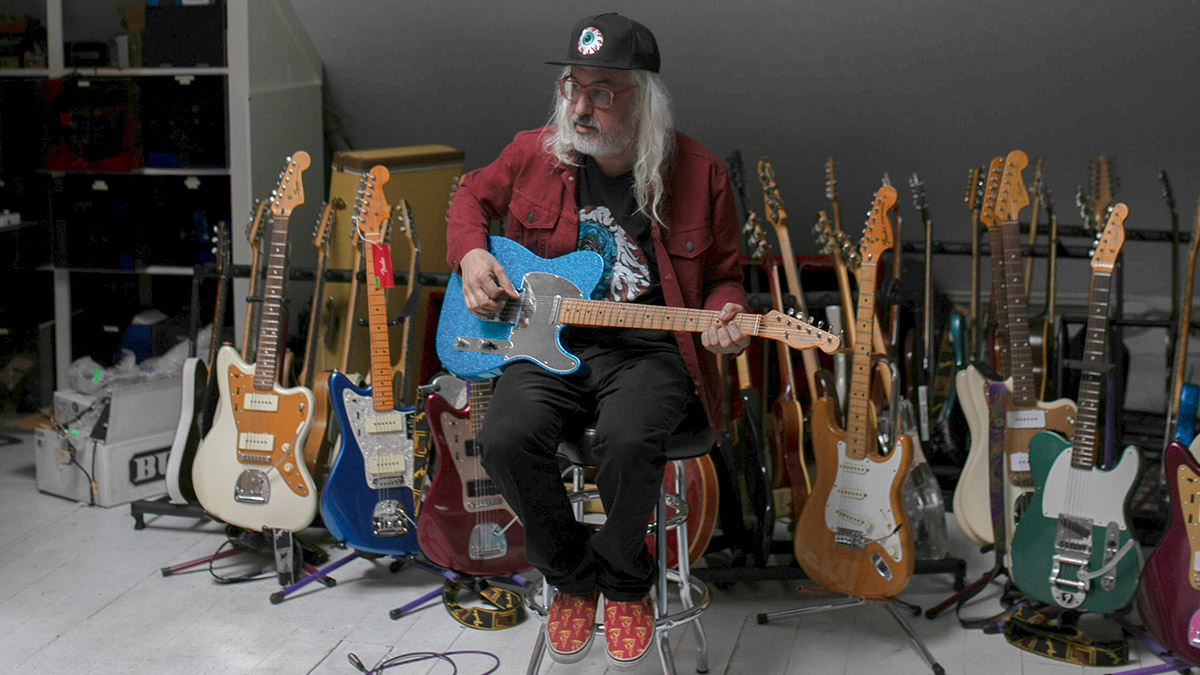
Is there any story behind the blue sparkle finish? It’s an amazing colour.
“Yeah! I mean, I always loved that colour. I played drums as a kid and that’s a popular drum colour. At first, I didn’t refinish it; I just put the drum stuff on the front like a Gretsch, y’know, with the blue sparkle. I glued it to the front and then a few years later I had it painted.”
The original pickup on your Telecaster are a bit different. We tend to think of the Tele pickups as the knife for cutting through the mix but those on your old Telecaster have a little more warmth and width to them.
“Yeah, I remember when I bought it he said that he had put a ’56 pickup in the bridge – and, y’know, I didn’t know anything about pickups, I just liked the way this one sounded. It doesn’t have that country twang. It’s got a little bit more of a P-90 sound. I don’t know why. The pickups on the new one, I haven’t compared them that intensely but they sounded good, too.”
Did Fender take them apart or something to replicate them?
“I don’t know what they did! [Laughs] I just sent them the guitar!”
Haha! Fair enough. These conversations about tone can make us sound kind of silly…
“Yeah!”
… But, that said, your tone does have this sort of vocal, three-dimensional texture to it. It’s like your lead tone sounds a little like Janis Joplin’s voice. It’s like there’s a bit of Joplin’s throatiness in there.
“Oh!? [Laughs] I don’t know, I am just looking for some sort of sound that inspires me. I can’t really say what it’d be but I know it when I hear it.”
Sure, there are overtones, and all sorts of extra frequencies that poke out – especially with the Jazzmaster pickups – that fill the mix, and that seems to work really well for you as a three-piece.
“I wouldn’t know. You tell me! [Laughs] Initially, I didn’t have that many choices. I would just buy what I bought and then use that, and then over the years it’s just if something sounds better to me than what I have got then I’ll go with that, or if there’s some sound that inspires me.”
At some point you really just have to pick something and just start playing
That’s how the pedalboard grows. In a sense, you were born too late – we all were – when it comes to vintage guitars but, at the same time, there has never been a better time to collect pedals and have the options in your pedalboard instead. You were part of the first generation of players who had access to all these pedals.
“Right, but at some point you gotta make a record or do a gig, so you have to decide on what to use at some point. Some people just get too wrapped up in it. There are so many choices, and they can never pick anything and just start playing. It can be overwhelming by this point. It’s like Spotify, where you can listen to every song, and it’s on your phone, and there are so many songs it’s crazy – you don’t know where to start. So, yeah, I guess, at some point you really just have to pick something and just start playing.”
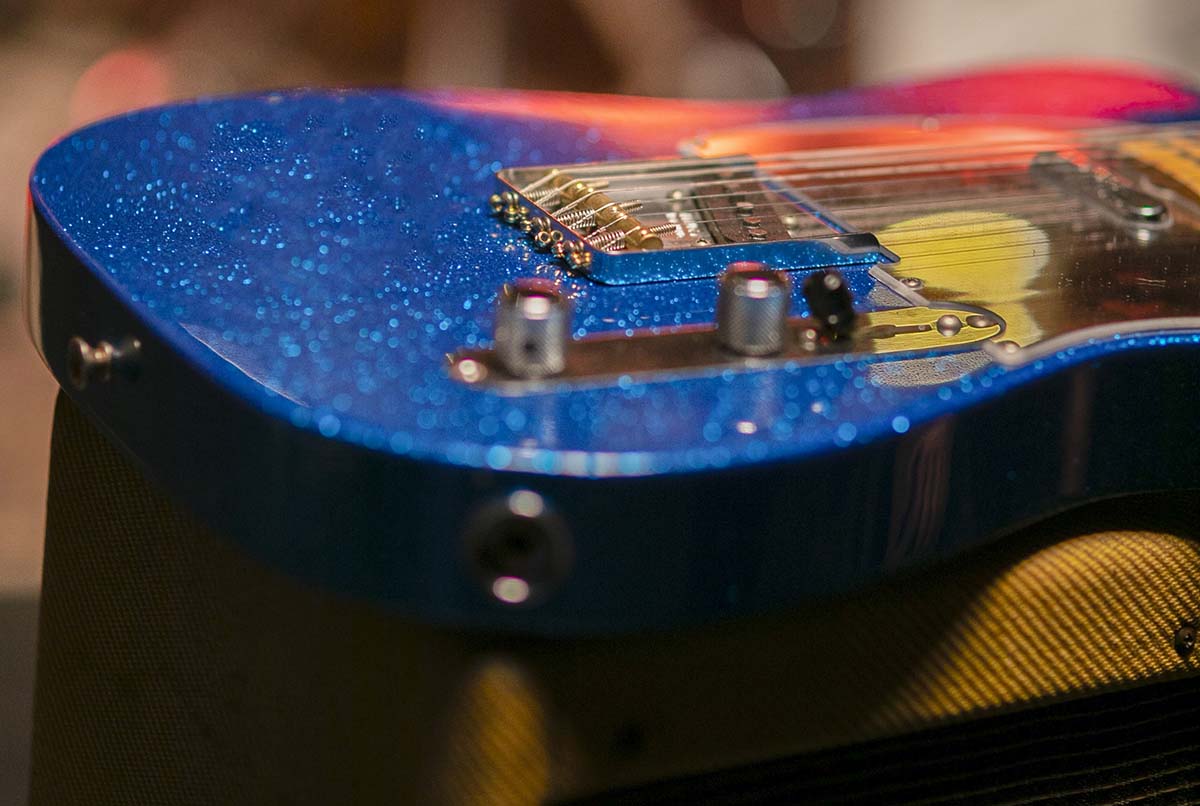
It would make an interesting counterfactual if the Beatles and their generation had what we have now. What would the Beach Boys have sounded like? Maybe those restrictions helped the evolution of popular music.
“Right, I think so. Yeah, I am really pro restrictions, ‘cos too many choices… That’s just it, it’s too much, and you just don’t know what to do with it all.”
What do you find more difficult – choosing a guitar or a pedal for your ‘board?
“I don’t know. Hmm, I don’t know. It is all one thing to me. I started playing guitar with pedals and with amps, and it’s like I learned to play guitar and pedals all at once. It’s like one big thing to me.”
That’s the thing. When you start out and you learn Smoke On The Water or Taste Of Honey, whatever, they don’t tell you about having to work with volume, fuzz, feedback… and how it all has to work together.
“Yeah! When I was learning, I got the pedals and the guitar at the same time because I knew the guitar wasn’t enough on its own. I needed the pedals to make more dynamics and to have more power, and different sounds. Coming from drumming, the guitar was so one-dimensional, I had to find all these things to make it feel more dynamic and expressive.”
Johnny Marr said something about that recently. That pedals were his way of making the guitar compete with orchestration and synths, and making more of the instrument. Because it does have limitations…
“Yeah, and that’s good for me. Y’know, even with different tunings, it took me a long time to get to a point where I could try to do that because I liked the limitations of how the guitar was. If you just started tuning it any way [you like] it makes it a little too limitless for my tastes, or to get anything done with it.”
Yeah, and besides, even within three chords, there are already an infinite amount of musical possibilities.
“Yeah, right! Some more possibilities isn’t necessarily good for me.”
It’s that same anxiety when you go to the ice cream parlour and there are 47 flavours. There’s too much choice.
“Yeah, I would say so.”
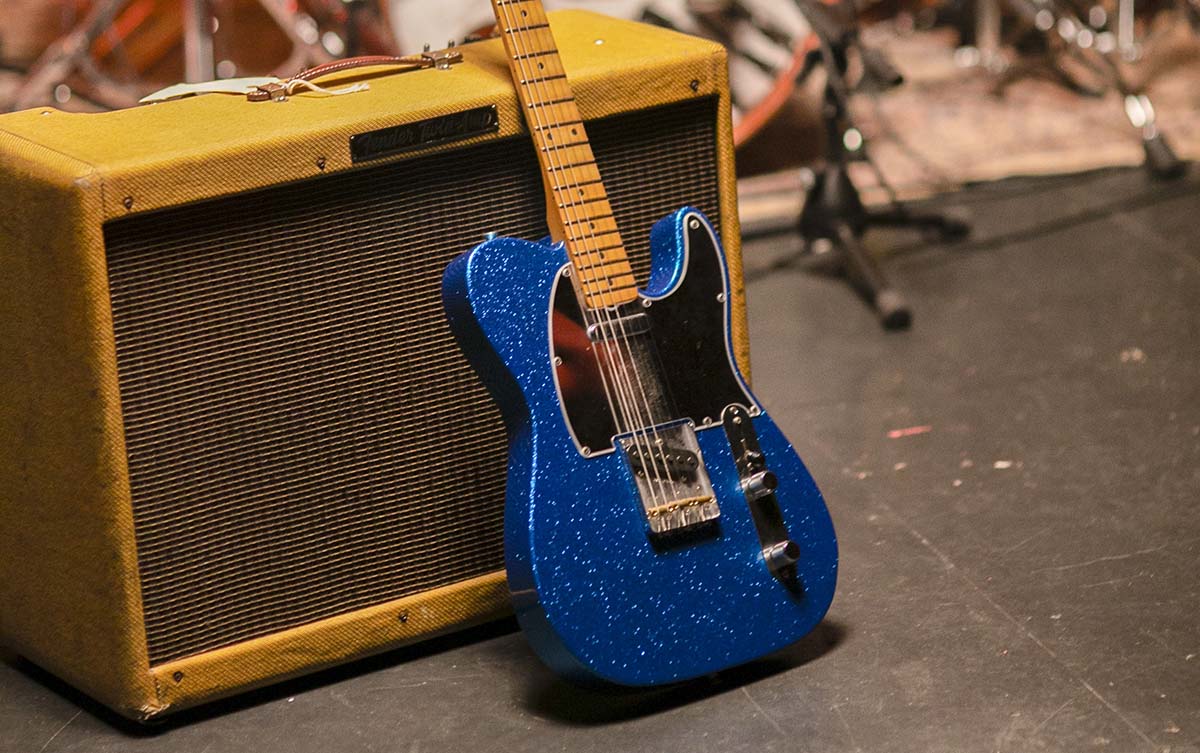
When we think about amps and effects, we always talk about amps taking effects well, but do we talk enough about how guitars take effects well? Some guitars just don’t work so well with fuzz on them.
“Yeah, sure, I guess early on I figured out that humbuckers don’t take effects as well as single-coil pickups, and then on and on from there, it all interacts and you’ve got to see what works. All the ingredients make a difference.”
I would rather just do a different track with another amp than put one guitar through seven amps and then try to get one sound of out all of that
What was it about the humbuckers that didn’t work for you? Too dull?
“Yeah, too dull for my tastes, and again, it made it less dynamic sounding to me. It just kinda squashed everything into this one sound. Yeah, it was just too compressed or something, too squashed together.”
What guitar amps are you using these days? Are you still using the hand-wired Vox combos?
“Yeah, my basic thing is like a Fender Tweed for rhythm and Vox for lead. Or Vox for another rhythm to go with the Fender Tweed also. That’s kind of the basic recipe, I guess.”
Do you blend them together with splitters or anything?
“No, I don’t. I mean, I have experimented with that but that was too much. I just want one amp. I would rather just do a different track with another amp than put one guitar through seven amps and then try to get one sound of out all of that. It’s a bit too much for me.”
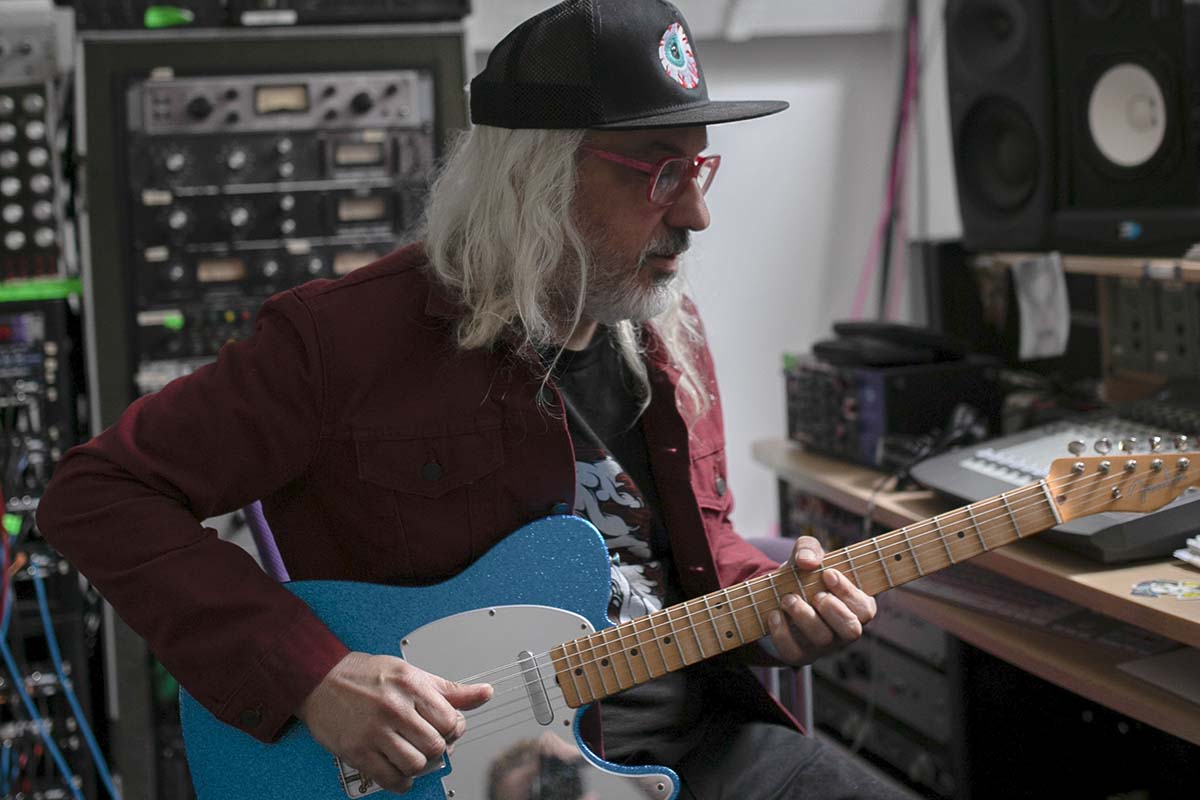
What about restrictions when it comes to writing? You’ve spoken before about liking to write on vintage guitars, or on cheap ones, is there something in that, like the idea can be done but there’s less pressure on it because it doesn’t feel too finished? Sometimes when we write on electric it feels like we’ve missed a stage in the song’s development.
“Oh yeah, I haven’t thought of it that way but that’s interesting. With old guitars, usually I’ll try to play and hope that there’s some song in there that I can pull out. But then I have also gotten songs out of a new pedal. Somehow it’ll just inspire me to play some riff, which on my last album, I realised I got that Big Muff that JHS made with all the different Big Muffs on it, and I started playing that and came up with a riff that ended up on the album. It was interesting to find that. I guess I hadn’t considered that. New stuff can also inspire you or bring out different riffs, or bring out something different in the guitar.”
With any pedal I just turn the knobs and find the setting I like the best and then leave it at that one. I found that one setting and just left it there
You realise you’ve just sold another two thousand JHS Muffulettas by that commendation. But that’s an interesting one because you’ve got options with it but having them on a dial makes it a little less bewildering. It’s like it is all one thing.
“Well, with any pedal I just turn the knobs and find the setting I like the best and then leave it at that one. I found that one setting and just left it there. After that, I didn’t mess around with it anymore.”
Ah, that does make sense.
“Yeah! It’s like that’s the sweet spot with this pedal, so I’ll just leave it as it is.”
It feels a bit strange to ask you about the recording of Sweep It Into Space because most of it was before the pandemic and who can remember anything from immediately before that. But let’s go back. You worked with Kurt Vile. What were you looking for from him as a producer?
“I like him to just add different dimensions, or to play, sing or think of things that I wouldn’t think of, that when added to the song just gives it a different dimension.”
I Met The Stones is a cool track. It’s kind of eighth-note heavy metal and that lead you have snaking around the vocals sounds almost like something Ron Asheton might do.
“Yeah, you’re talking about the lead between the vocals? That I was doing on an Eastwood baritone guitar. That sounded cool to me – that’s one thing that’s not the Tele. But it was a cool sound, that one part that’s in between the vocals.”
Is the baritone something you reach for often in the studio?
“Hmmm, I don’t know. I’ve got a lot of baritones. Sometimes I’ll reach for them just depending on the key of the song or something. It depends. But that was a sound that I didn’t think could come out of a baritone, so I thought it was pretty cool.”
But even going way back to the Minutemen, they said, ‘The album is a flyer for the gig.’ I still have that kind of mindset, too, like the album is a flyer for a gig
And you had to engineer the rest of the record to finish it off?
“Yeah… I’m not the greatest engineer! [Laughs] I don’t have the mind for it. I had to learn a bit, and definitely stripped things down to do it myself. Then all the guitars I was using, and the hand-wired AC30 because it had a master volume and it was right next to me I would turn it way down.
“And I had to play a piano part; I couldn’t get the piano player to come. I was trying to play it on this Mini Mellotron, and I am not a very good keyboard player but the good thing about that is it has this dial where you can switch the key, so I could still play my style. My style is all the white keys! [Laughs] So I’ll play my style and then put it in a different key.”
That’s a safe bet. Stay on the white keys. Many a guitar player reading this will recognise the wisdom in that.
“Right! The you can just use the tuning knob. It’s great. You can fit it into anything.”
Have you had any good pedal discoveries that went on this record? People must send you some weird things.
“I can’t think of any. There’s like a pile of pedals but I can’t think of anything specific that made it or was any different… [Pauses, points to a pile of stompboxes] I’m not sure. If you look around, there are some pedals here…”
Ha! That is a lot of pedals. It’s not easy to keep track of all this stuff.
“Yeah. [Laughs] I don’t even remember what pedal is on what thing. I didn’t write it down – especially when I am engineering! I’m not not going to write stuff down, of what the signal chain is. I was just plugging different things in.”
That’s the problem when the engineer isn’t there. They are like the grown-ups. Okay, what’s next for you? Have you been writing in this time?
“I am supposed to go on vacation, and then I go on tour. But I don’t know. We’ll see how the tour goes and what that feels like. That’s going to be strange.”
It can’t help but be strange after all this time.
“We played some shows with no audience during the quarantine and that was tough. We played a show outdoors at a place, a park nearby where we played with Kurt Vile in 2019, and so we played the same place with no one there and filmed it, and it was really hard to get no energy coming back and having to put out all the energy. That was very exhausting and a weird feeling.”
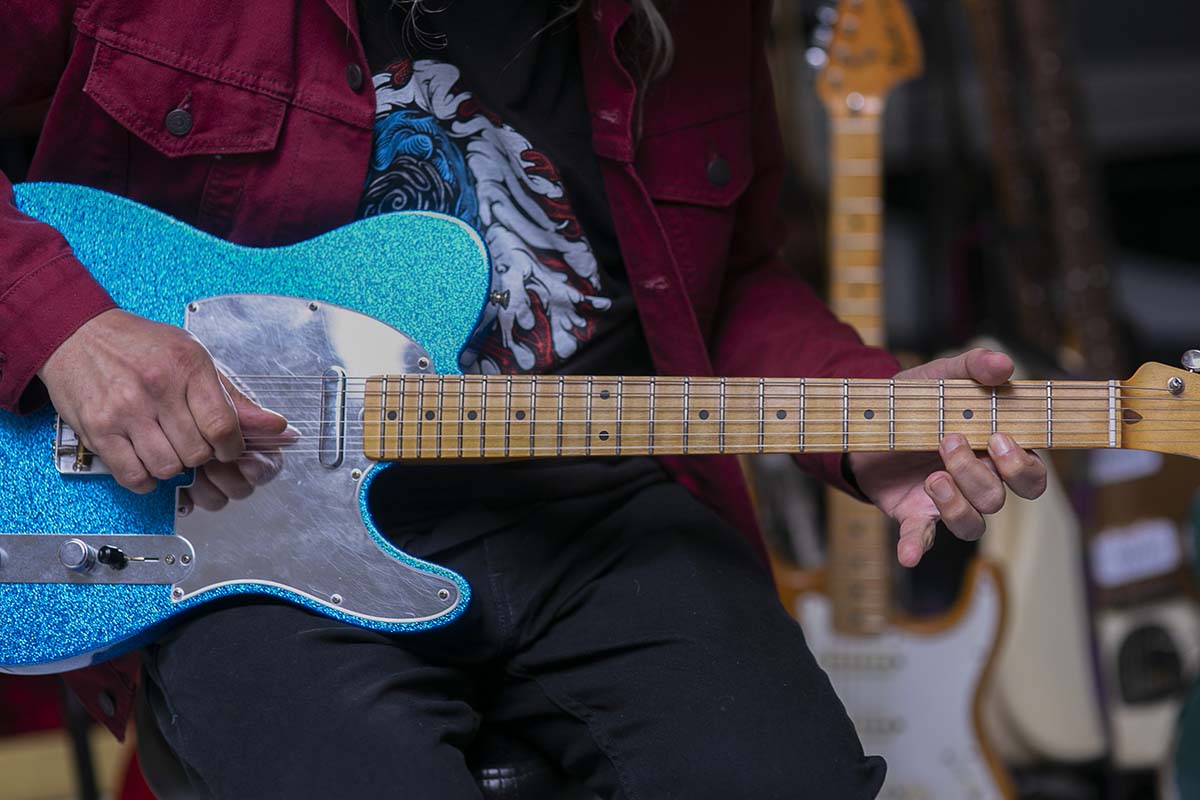
Well, hopefully everything stays on track. It’s the funny thing about a record, it’s as though it needs to be performed in front of people before it’s really finished.
“Yup. But a record now is more just an excuse to tour. I guess we’re still waiting for that part of it.”
But you’re still an album guy. You still believe in the album format?
“Sure. But even going way back to the Minutemen, they were a band we liked but they said, ‘The album is a flyer for the gig.’ It was just like, you want to play a gig so you make an album. We had an album early on when we started so we could give that to clubs and get gigs. It looks better than a tape if you give them an album. I still have that kind of mindset, too, like the album is a flyer for a gig.”
And one of the all-time great punk records – Vile’s Solution – took that idea to its logical conclusion. Didn’t they use every pressing of the album as a flyer and put them on people’s windshields?
“Right, I guess that’s a way I can deal with how the music business has gone. It’s full-circle. That’s how it is again – the album is the flyer for playing live.”
- Sweep It Into Space is out now via JAGJAGUWAR.
- The Fender J Mascis Signature Telecaster is available now, priced £1,299 / $1,349.99 / €1,449. See Fender for more details.
Jonathan Horsley has been writing about guitars and guitar culture since 2005, playing them since 1990, and regularly contributes to MusicRadar, Total Guitar and Guitar World. He uses Jazz III nylon picks, 10s during the week, 9s at the weekend, and shamefully still struggles with rhythm figure one of Van Halen’s Panama.
